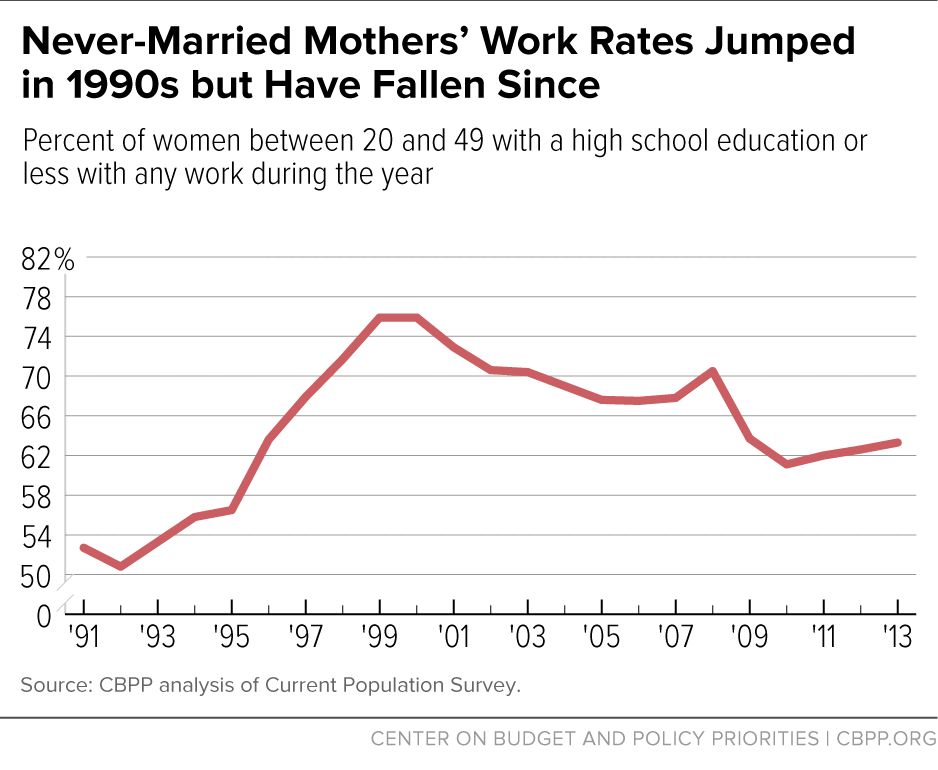BEYOND THE NUMBERS
The facts don’t support claims by the American Enterprise Institute’s Robert Doar that TANF (Temporary Assistance for Needy Families) is a success so we should continue and even strengthen its “work-first” approach — which requires recipients to participate in activities that mimic work (like unpaid jobs) and thereby limits their access to education and training.
- Like others who claim that the 1996 welfare reform law that created TANF succeeded, Doar relies on data from TANF’s early years, when the economy was booming. More recent data paint a very different picture. For example, Doar says labor force participation among never-married mothers rose between 1995 and 2001 but doesn’t point out that most of those gains have since disappeared (see graph).
- The most effective work program from welfare reform’s early years wasn’t a work-first program. Rather, it was a “mixed model” in Portland, Oregon that provided several pathways to work, including training, job search, and unpaid work. Participants’ earnings over five years were 25 percent higher than the control group’s. The earning impacts for all but one of the work-first programs in the same study, in contrast, were under 20 percent and as low at 8 percent.
- Most work-first participants aren’t stably employed and their situations don’t improve over time. The early evaluations of work-first programs all show a similar pattern: modest increases in employment that don’t lead to steady employment. For example, about 75 percent of participants in Riverside, California’s work-first program — often presented as a model in TANF’s early years — worked at some point in the five years after the study began, but only 26 percent had earnings in all four quarters of the fifth year. And a recent study of parents that left welfare in Maryland found that over five years, only 8 percent had continuous earnings above the poverty line for a family of three ($19,790).
- Over the long term, work-first programs don’t outperform programs that encourage intensive training. Participants in intensive training programs in Missouri and North Carolina had lower earnings initially than participants in work-first activities but significantly bigger earnings gains over time, a 2005 study found.
- Training programs, especially those focusing on jobs in demand locally, significantly boost earnings. A study of several training programs found that people randomly selected for sectoral employment programs in health care, construction, and computer repair had earnings 18 percent higher than non-participants. As this and other studies show, a common pattern in training programs is lower employment and earnings while participants are in training, followed by a significant increase in earnings.
Claims of welfare reform’s success also ignore Kathryn Edin and Luke Shaefer’s new book, $2 a Day: Living on Almost Nothing in America, which traces the doubling of the number of extremely poor children between 1996 and 2011 — from 1.4 million to 2.8 million — to TANF’s failure.
In today’s increasingly skill-focused economy, work-first approaches that limit TANF recipients’ opportunities to increase their skills through education and training hurt their chances of finding jobs and lifting themselves out of poverty.

